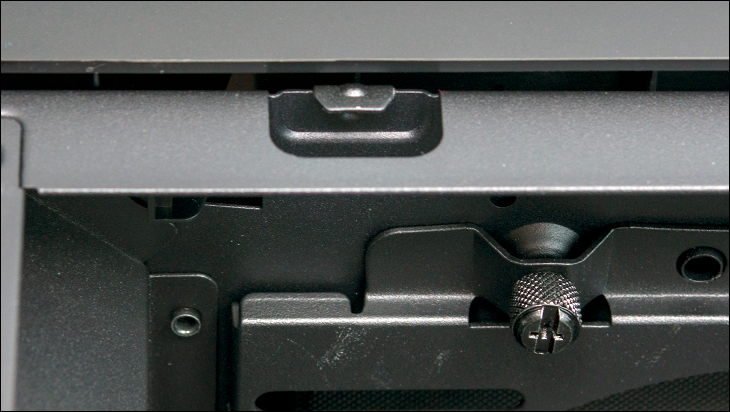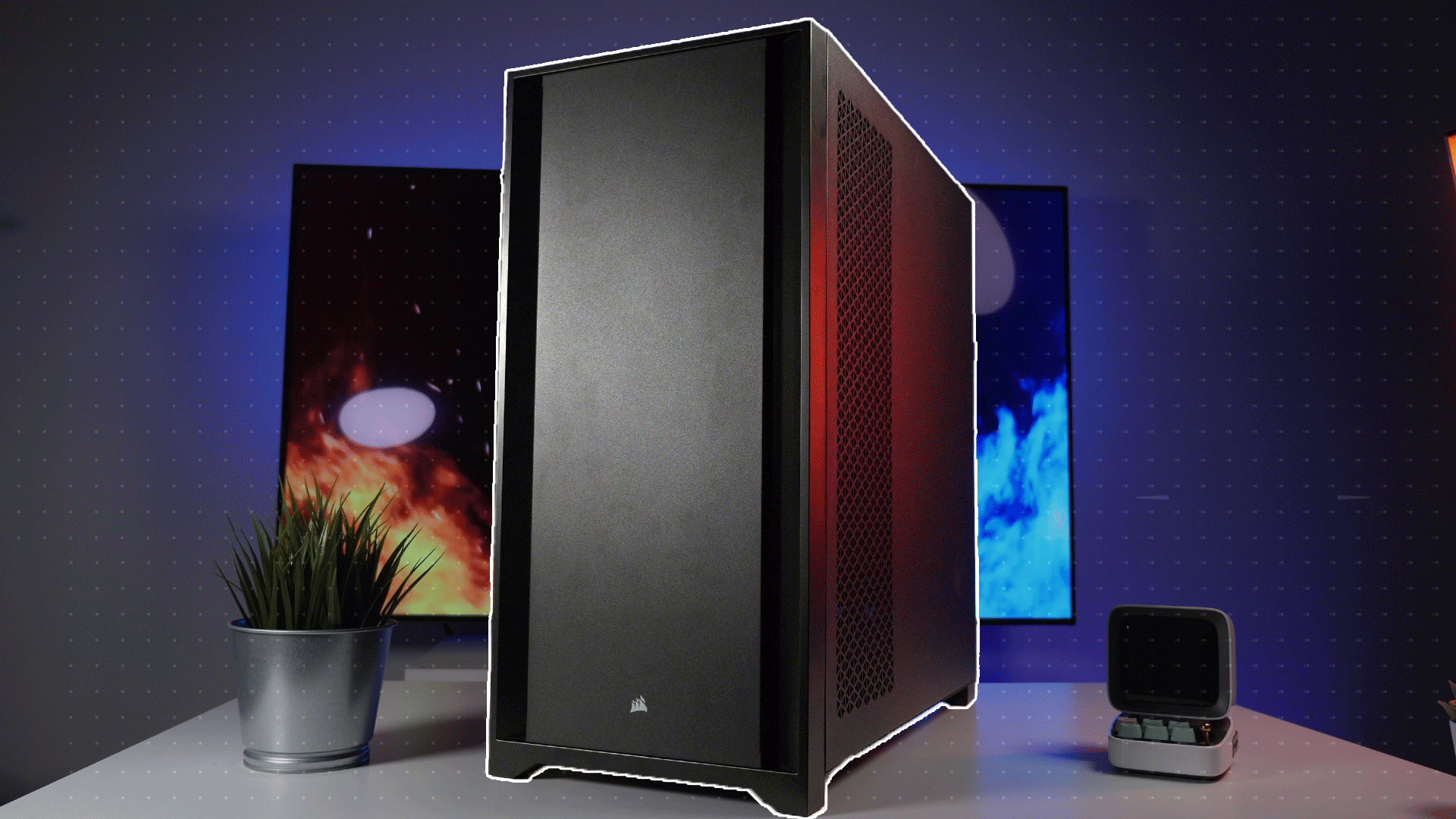
Stepping back for a moment and looking at the ‘500 foot view’ the 5000D is a rather stunning looking case. One stunning, big case. To be precise it is 520mm / 20.47-inches tall, 520mm / 20.47-inches long, and a whopping 245mm / 9.65-inches wide. To put that in perspective our personal “Full Tower” Phanteks Enthoo Pro (v1 not the “improved” Pro 2) is 535mm tall, 550mm long, and 235mm wide. So yes, the 5000D really is skirting the very edge of ‘mid tower’ classification.

To be fair, the most likely reason Corsair classified the 5000D as a mid-tower case, and just like the 4000D, is it only has 7 PCIe slots – with an additional 2 vertical slots – and not 8 or 9 PCIe slots. To be honest, we typically do not care all that much about vertical slots on solid side panel cases. With the 5000D however, they are the perfect way to get a bit extra fresh air into the case directly in to the flow of the video card fans via an aftermarket fan and a 3D printed PCIe expansion slot adapter. Other than that edge case… they are pretty much going to be ignored by 99.999 percent of the general public. With that said the inclusion of two of them means that there is a veritable ton of space between the motherboard and that pretty full coverage tempered glass side panel – Corsair rates the 5000D at 170mm of clearance. So we seriously doubt any air based CPU cooling solution will not fit. Which is just another thing we cannot say about every ‘mid-tower’ case available – including the 011 Dynamic and its 155mm max clearance.

For those who have concerns over the security of that big hunk of glass hanging off the case fear not. This side panel is secured much better than how Lian-Li does things (which admittedly is faster… but not as secure).

To be precise that beautiful hunk of glass is held in place with two (albeit non-captive) case screws at the back, two ‘plunger’ style friction locking tabs on the side of the back side, and four metal tabs/hinges at the front. Quite honestly that is enough points of contact that you could probably hang off it and not worry about things going ‘crash’. Color us impressed with Corsair getting the little, and not just the flashy, details right.

Zooming back out, a few other features of the case do demand attention. First and foremost is this case’s top and front panel coverings are metal and not plastic (though the front fascia and ~1 inch high feet are plastic).

In a somewhat similar way to the glass door, both of these are held in place with four of those friction plunger locking tabs (two at the front/top and two more at the back/bottom). They are however not spring loaded so a good tug is required to pop these panels off. For those worried about them blocking air from being sucked in, like say the pretty but pretty terrible (from an airflow perspective) O11 Dynamic, this really is not a concern.

There is a good 3cm gap on the left and right sides of each panel. This in conjunction with about an inch height gap and smoothly sloping sides means that air is gently persuaded to go into the fans and in/out of the case. To be perfectly candid we would worry more about keeping the full-length air filters clean than the metal coverings causing problems… just understand that you will want to use good fans with good static pressure for best results. This however is eons better than solid glass front and solid glass sided Lian-Li which just loves to shake ‘n’ bake high end systems.

In a puzzling move, these filters are not magnetically held in place and rather use ‘old school’ plastic locking tab(s) to secure them. Needless to say, they are bit more annoying to remove and you will have to flex them to remove and clean them. While rare, similar setups with older (non-Corsair) cases has resulted in a broken tab or filter for us. Neither of which makes for a good day. We would have much preferred to have seen these critical components secured via that plunger locking mechanism, magnets, or sit in tracks. Any of which would have been easier on the insertion/removal front and be more durable over the long haul. More importantly that is how many other case in this price range do things. Furthermore, the PSU filter (about 16.5cm by 12cm) uses the slot/track method and is probably the easiest to clean of the bunch so it is not like Corsair’s engineers did not think about alternative mounting methods.

On the fan front, as this is the water-cooling centric version, Corsair only included two fans. One at the front and one at the back. Both are 120mm fans, and both are the exact same fan that came with the Corsair 4000D: Corsair ‘AirGuide’ technology equipped RWF0050 Fluid Dynamic Bearing fans that spin about 1250 to 1300rpm (as a mass produced item their exact speed will vary with the back being slightly faster than the front with our sample).

The included I/O front panel options have been nicely upgraded from the 4000D but may still leave some wanting a wee bit more… as that top metal covering all but begs to be used as a temporary shelf for external devices like the pretty LaCie 1/2Big or Mobile series of external drives (as an aside this case and LaCie do go nicely together better than 95 percent of other cases we have used. The 5000D really is pretty and elegant enough to not look like the ugly step sister when paired with LaCie devices). In addition to the moderately sized power button, small reset button, stereo speaker jack, and two USB 3.1gen2 ports Corsair has added in a USB Type-C port – for a grand total of 3 high-bandwidth capable USB ports. This is a great step in the right direction, but still a bit behind the competition. For example, Fractal Design’s Define 7 offers all that and then adds in two USB 2.0 ports (which are perfect for low bandwidth devices such as Logitech wireless receivers and the like). This offering is however the same as what Lian-Li’s O11 DYNAMIC offers… and obviously what Corsair’s design team had in the cross-hairs when sitting at the drawing board thinking up the 5000-series.











